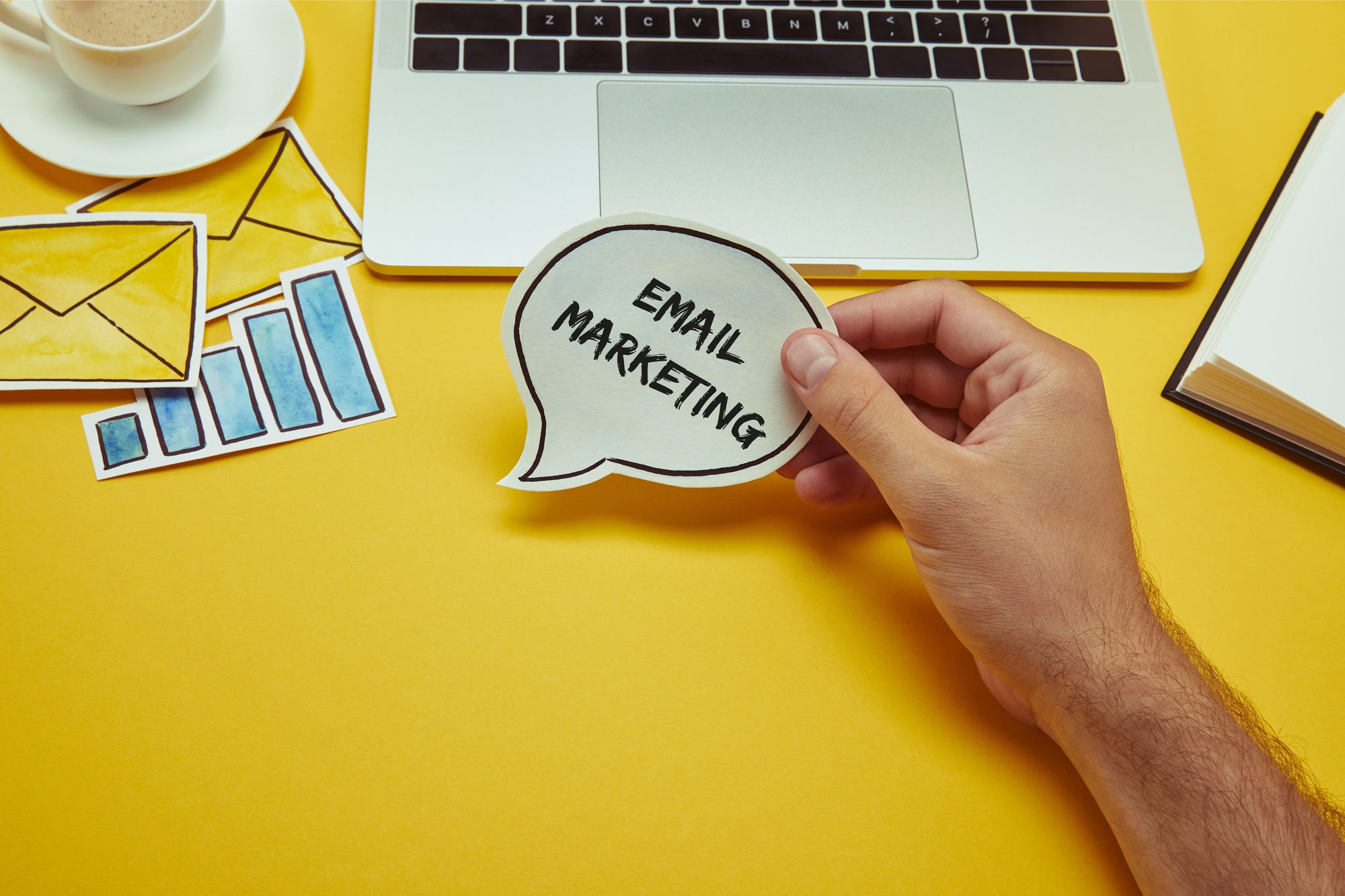Key Takeaways

- Understanding Segmentation: Email marketing segmentation divides your list into targeted groups based on criteria like demographics, behaviors, and interests, allowing for personalized content delivery.
- Improved Engagement and Conversion Rates: Segmented campaigns can achieve up to 39% higher open rates and click-through rates ranging from 2% to 5%, significantly increasing the likelihood of conversions.
- Types of Segmentation: Utilize various segmentation methods, including demographic, behavioral, geographic, and psychographic factors, to tailor messages effectively for your audience.
- Data-Driven Strategies: Analyze customer data, including demographics and purchase history, to inform your segmentation strategy and create targeted campaigns that resonate with your audience.
- Best Practices for Success: Set clear goals for your segmentation efforts, continually test and optimize your segments, and adapt your strategies based on performance metrics to maximize campaign effectiveness.
In today’s digital landscape, email marketing remains a powerful tool for businesses. But to truly harness its potential, you need to understand the importance of segmentation. By dividing your email list into targeted groups, you can deliver personalized content that resonates with your audience, leading to higher engagement and conversion rates.
What Is Email Marketing Segmentation?

Email marketing segmentation involves dividing your email list into smaller, targeted groups based on specific criteria. This approach allows you to send personalized content that resonates with your audience. By focusing on various segments, such as demographics, purchase history, or engagement levels, you enhance the relevance of your marketing messages.
Utilizing segmentation improves engagement by ensuring recipients receive content that meets their interests and needs. For example, a small business can segment its list by customer preferences or previous interactions. This strategy increases open rates, click-through rates, and conversion rates, ultimately driving better results.
Effective email marketing segmentation creates opportunities for tailored marketing campaigns. You can develop targeted messages for each segment, increasing the chances of conversion. By leveraging data analytics and customer insights, you can refine your approach and enhance overall marketing effectiveness.
Benefits Of Email Marketing Segmentation

Email marketing segmentation significantly enhances the effectiveness of your campaigns. By targeting specific audience groups, you achieve better engagement and conversion outcomes.
Improved Engagement Rates
Segmented email campaigns lead to higher engagement rates. Tailored subject lines and content relevant to your audience can result in up to 39% higher open rates compared to non-segmented emails. When you customize messaging, recipients find the content more appealing, increasing the likelihood they’ll interact with your emails.
Higher Conversion Rates
Segmentation also boosts conversion rates. By providing content that resonates with targeted groups, you encourage action. Typically, click-through rates (CTR) for segmented emails fall between 2% and 5%, with more precise targeting often yielding even higher results. This ability to effectively connect with your audience translates into increased conversions, making your marketing efforts more efficient and impactful for small business growth.
Types Of Email Marketing Segmentation

Email marketing segmentation enhances campaign effectiveness by allowing you to tailor messages for specific subscriber groups. Here are the main types of email marketing segmentation:
Demographic Segmentation
Demographic segmentation divides your email list based on demographic factors. Key aspects include:
- Age: Different age groups exhibit unique purchasing behaviors and content preferences. For example, students may respond well to exclusive discounts, while older adults might appreciate services related to retirement planning.
- Gender: Men and women often engage differently with promotional content. Tailoring product promotions based on gender increases relevancy and can enhance engagement rates.
- Income: Segmenting your list by income levels allows you to align promotions with subscribers’ financial capabilities. Targeting high-income individuals with luxury items and offering budget-friendly options to lower-income subscribers can maximize relevance.
Behavioral Segmentation
Behavioral segmentation focuses on how subscribers interact with your emails and your website. Key elements include:
- Purchase History: Analyzing past purchases helps you recommend related products, increasing the likelihood of follow-up sales.
- Email Engagement: Tracking open rates, click-through rates, and time spent on content guides your strategy. Engaging users who consistently open emails can result in tailored offers that drive conversions.
- Browsing Behavior: Monitoring what subscribers view on your site allows for personalized product recommendations, leading to improved user experience and potential sales.
Geographic Segmentation
Geographic segmentation divides your audience based on their location. Relevant factors include:
- Region: Customizing content based on regional preferences can align your messaging with local interests. For example, targeted promotions can effectively address the needs of subscribers in urban versus rural settings.
- Language: Adapting email content to the primary language of specific geographic areas fosters inclusivity and engagement.
- Climate: Altering marketing messages to reflect climate differences can influence product offerings. Promoting seasonal items based on geographic weather patterns maximizes relevancy.
Psychographic Segmentation
Psychographic segmentation categorizes subscribers based on lifestyle, values, and interests. Key components include:
- Interests: Tailoring emails to specific hobbies or interests enhances the appeal of your marketing content. For example, promoting fitness products to health-conscious subscribers aligns with their values.
- Lifestyle: Segmenting based on lifestyle choices allows for content that resonates more deeply with your audience. This strategy increases the relevance of messaging and fosters a stronger connection with subscribers.
- Personality: Understanding personality traits helps refine marketing strategies. Adjusting tone and messaging to match subscriber personalities can increase engagement and conversion rates.
Best Practices For Effective Segmentation

Effective email marketing segmentation enhances your campaigns, leading to increased engagement and conversions. Implementing best practices ensures your efforts yield the highest impact.
Define Clear Goals
Setting clear goals is vital for successful email segmentation. Your objectives could include increasing sign-ups, boosting sales, or improving top-of-funnel awareness. Design segments that align with specific marketing KPIs. Metrics will indicate if efforts are effective, allowing for informed adjustments to your strategy.
Analyze Customer Data
Analyzing customer data forms the backbone of effective segmentation. Focus on these critical aspects:
- Collect Relevant Data: Gather demographic data, including age, gender, and income, to inform your targeted messaging.
- Track Purchase History: Understanding buyers’ past behaviors allows for tailored recommendations and upsells.
- Evaluate Engagement Metrics: Monitor open and click-through rates to identify active subscribers and adjust strategies accordingly.
Test And Optimize Segments
Regularly testing and optimizing segments enhances performance. Try distinct strategies within your segments to identify what resonates best with your audience. Analyze results to refine your approach continually. Adapting your segmentation strategy based on ongoing data analytics keeps your efforts relevant and effective, driving small business growth.
Conclusion

Email marketing segmentation is a powerful tool that can transform your marketing efforts. By targeting specific groups within your audience, you can deliver personalized content that resonates deeply. This tailored approach not only boosts engagement but also significantly increases conversion rates.
As you implement segmentation strategies, remember to leverage customer insights and data analytics. Regularly refining your segments will keep your campaigns relevant and effective. With the right segmentation practices in place, you’ll enhance your marketing performance and drive growth for your business. Embrace the potential of segmentation and watch your email campaigns thrive.
Frequently Asked Questions
What is email marketing segmentation?
Email marketing segmentation is the practice of dividing your email list into smaller, targeted groups based on criteria like demographics, purchase history, or engagement levels. This allows businesses to send personalized content that resonates better with specific audiences.
Why is email marketing segmentation important?
Segmentation is crucial because it enhances the relevance of marketing messages, improving engagement and conversion rates. Personalized content increases open and click-through rates, making campaigns more effective and impactful.
What are the benefits of segmented email campaigns?
Segmented email campaigns lead to higher engagement rates, with open rates up to 39% higher than non-segmented emails. They also boost conversion rates, with click-through rates ranging from 2% to 5%, based on targeted messaging.
What are the main types of email marketing segmentation?
The main types of email marketing segmentation are demographic (age, gender, income), behavioral (purchase history, email engagement), geographic (location-based), and psychographic (lifestyle, values, interests). Each type helps craft more relevant campaigns.
How can businesses improve their segmentation strategies?
Businesses can improve segmentation by setting clear goals aligned with KPIs, analyzing customer data (demographics, purchase history, engagement), and regularly testing and optimizing segments. This ongoing refinement ensures marketing efforts remain effective and relevant.
Image Via Envato



